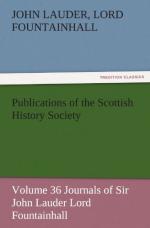[470] Sir George Gordon of
Haddo, 1637-1720 (see infra, p. 177),
afterward
Chancellor and Earl of Aberdeen, now returning from
studying
law abroad. Advocate, 1668, Lord of Session, 1680,
President,
1681, Chancellor, 1682.
[471] Printed in 1668.
T.S. was the son of the Bishop of Galloway. He
became
conductor or proprietor of a theatre in the Canongate,
Edinburgh,
and published the Caledonian Mercury, the first
Scottish
newspaper.
[472] Weigh.
After some way ye come to Covent Garden, all which will quickly fall in to my Lord of Bedford by wertue of an assedation which quicklie is to expire, having let of old the ground on the condition they should build upon it and they brooking the ususfruit for such a space of tyme it should finally returne to him; and this they tell me to be a ordinary contract at London;[473] then New Street, Suffolk Street, Charron Crosse, St. Martins Lane. In its Church preaches D. Hardins, a pretty man. Heir is York house, the New Exchange, etc., then the Strand and Savoye, Temple bar within and without the Gate, wheir are all their Innes of Court, their lawyers and many booksellers. Then ye come to Ludgate hil; then to St. Pauls; then to Cheapsyde Crosse; then in to Broad Street at the back of the Exchange now: their is also Litle St. Helens and Great St. Helens, Leadinghal; also Aldgate, wtin the gate or wtout it; which is either wtin the bars or wtout them called White Chappell; out which way we went to Hackney, a village some 2 miles of London wheir M’ris Inglish hir son Edward lives; saw Bedlan Green by the way and the beggars house. Neir Algate goes of the Minorites leading to Tower-hil and the Tower, then doun to the Hermitage. The Custome house is in Mark Lane.




